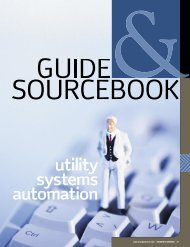asset management
asset management
asset management
You also want an ePaper? Increase the reach of your titles
YUMPU automatically turns print PDFs into web optimized ePapers that Google loves.
cates and overlapping software. Utilities continue to mix and match<br />
their <strong>asset</strong> <strong>management</strong> solutions, but view them as a necessary part<br />
of a whole. “Work <strong>management</strong>, <strong>asset</strong> <strong>management</strong> and financial are<br />
integrated into one system,” says Connie Woo, vice president and CIO<br />
at Toronto Hydro. “The rest (CIS, SCADA, GIS) are stand-alone systems.<br />
We definitely would like to see all of these systems integrated to<br />
support seamless processes.”<br />
“Seamless processes across all <strong>asset</strong> groups and functions” is<br />
the mantra of most utilities today, especially the large investorowned<br />
entities that dominate 75 percent of the market. That includes<br />
systems that deal with <strong>asset</strong>s all the way to the residence or business.<br />
“I mentioned field service automation and SCADA, which are two areas<br />
I would like to see improved,” Woo says. “We also have a distribution<br />
<strong>management</strong> system, but we would like to expand it.”<br />
Even industry analysts categorize the <strong>asset</strong> <strong>management</strong> marketplace<br />
in different ways. Some will rank work <strong>management</strong> vendors in one<br />
study, EAM vendors in another, supply chain <strong>management</strong> (SCM) in yet a<br />
third category, and ERP vendors in a fourth or fifth category — sometimes<br />
even adorning the term ERP with Roman numerals for good measure.<br />
Vendors will stake claims to being the No. 1 solutions provider in<br />
one category or another. Sub-segments in the marketplace often are<br />
applied, for example, defining industry categories in different functional<br />
ways (energy companies including oil and gas as well as electric, or separate<br />
categories for electric generation vs. transmission vs. distribution),<br />
or by using three “tiers” to distinguish large-, mid-, and small-sized<br />
companies before analyzing the different vendors’ market shares.<br />
But for utilities, the main interest is in developing integrated software<br />
systems that enable them to improve the processes involved in<br />
dealing with their <strong>asset</strong>s and doing so system-wide. “A major area that<br />
I’m really looking at where there needs to be a breakthrough is in business<br />
process orchestration,” says Gene Zimon, senior vice president,<br />
Information Technology, NSTAR, based in Westwood, Mass. “If you buy<br />
the logic that you’re implementing processes by assembling legacy and<br />
new software components, you end up with a set of systems that has<br />
to be integrated in order to deploy an effective business process.”<br />
Thus one important “<strong>asset</strong>” being sought from technology is<br />
improved “process,” making the definition even more complex.<br />
The complexity of the undertaking was expressed by Mahvash<br />
Yazdi, senior vice president, business integration and CIO, Edison International<br />
and Southern California Edison,<br />
in Rosemead, Calif. “Our engineering<br />
organization is looking into application<br />
of technology wherever it makes sense<br />
in terms of both transmission and distri-<br />
bution <strong>asset</strong>s,” he says. “We also have a<br />
group that we call our technology watch<br />
group, and we are looking at informationrelated<br />
technology, such as automation of<br />
field tools. We are providing our linemen<br />
and trouble men with computers in their<br />
trucks and with tools that will enable<br />
them to manage their work in a real-time<br />
fashion, and have the right material<br />
[<strong>asset</strong>s] at the right location. We’re looking<br />
at power line carriers in a private<br />
fashion, potentially for a narrow-band<br />
automated meter reading. So, we have<br />
technology groups that are doing technology<br />
evaluation as well.” That means<br />
meters and the systems and individuals<br />
who read them are <strong>asset</strong>s, as well.<br />
Toronto Hydro’s Woo also views <strong>asset</strong> <strong>management</strong> as part of<br />
Vendors will<br />
stake claims<br />
to being the<br />
No. 1 solution<br />
provider in one<br />
category or<br />
another.<br />
“service-oriented architecture.” Woo says: “We are planning an<br />
upgrade of our EAM system, which is the system from Mincom that<br />
encompasses all our work <strong>management</strong>, human resources, <strong>asset</strong><br />
<strong>management</strong>, our financials, our supply chain, and all of our back office.<br />
So we’re planning to upgrade to the next version of that system. Hopefully,<br />
that will move us to a new architecture — the service-oriented<br />
architecture. Hopefully that will position us better for the Web and<br />
future automation.”<br />
Despite the attempt by vendors and analysts to quantify and<br />
“pigeonhole” <strong>asset</strong> <strong>management</strong>, it continues to be elusive in terms<br />
of definition at utilities. But due to their <strong>asset</strong>-intensive nature, utilities<br />
know they need to be involved in it. They understand that <strong>asset</strong>s<br />
include everything from the pole or transformer in the field to the<br />
business intelligence provided to the boardroom by integrated enterprise<br />
systems that enable executives to see the status of those poles,<br />
transformers, generating plants, and field service crews.<br />
www.energybizmag.com ENERGYBIZ MAGAZINE 41



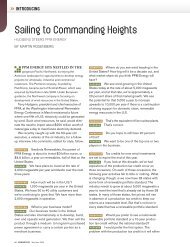
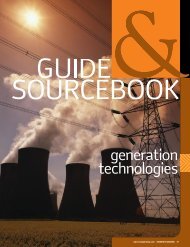
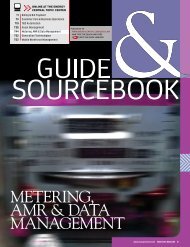

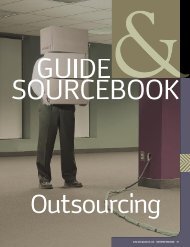
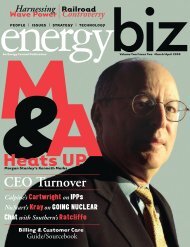

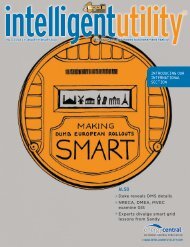

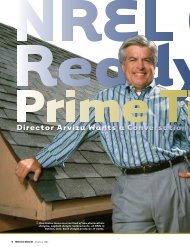
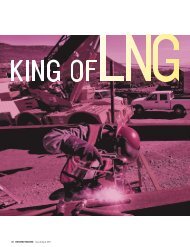


![View From the Trenches [PDF]](https://img.yumpu.com/18854438/1/190x252/view-from-the-trenches-pdf.jpg?quality=85)
